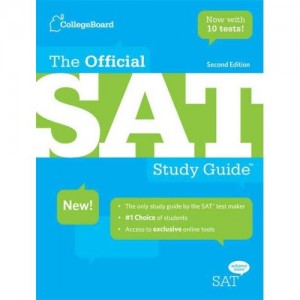SAT. ACT. NEW.
At the beginning of 2013, the guru of the SAT dropped the bomb on his 6,000 members while the head honcho of the ACT announced his, after finally beating the SAT. For the past several years, more and more students have been taking these two standardized tests so that they could apply to colleges and universities in the United States. However, it wasn’t until 2012 that the ACT had more test takers than did the SAT. Not surprisingly, the incumbent president of the College Board called for a redesign and rethinking of the test and its contents. In an almost immediate reaction, the ACT took its test one step further towards the tech era with a computer-adaptive version.
SAT test takers survived a change to their test back in 2005 so they are more used to it, but ACT test takers might be wondering what this all means. These much-needed updates are nothing new. Computer adaptive tests have been around for quite some time now, so it is easy to predict what is to come.
The SAT may appear to have lost some of its popularity. Therefore, test makers are trying to align it with the newly revamped common core standards of education in the US. In other words, no longer will we see those enigmatic or even cryptic words that were just one hit wonders in our lives. The math curriculum will focus on fewer topics but will delve more in depth into each one of them, requiring a better understanding of the subject but almost guaranteeing a smoother application of the technique. Another big change might be the essay. Don’t look so happy; the essay is here to stay. Head guru David Coleman goes on the record that the current essay prompt on the SAT “allows too much personal narrative and doesn’t challenge students to make evidence-based arguments”. Even though top schools are still believers in the SAT as a college readiness tool, these changes might make the test more appealing to students and to colleges.
The SAT might be trying to become more appealing but the ACT is definitely listening to its customers. According to surveys, students prefer test-taking experiences that involve computers. Therefore, the ACT joins the GMAT and the GRE in the realm of computer adaptive tests with a new platform. The GMAT is a question-adaptive test that changes its difficulty after every single question in order to better assess the test takers ability. On the other hand, the GRE is a section-adaptive test that changes the second section of each area after the tester has finished the first section in order to allow for moving forward and backward in each section without forcing a guess. As a breakthrough performer, the ACT brings virtual-task questions into the equation. Students will be asked to interact with situations, i.e. manipulating beakers on their screens, so that they can answer science-related questions such as differences in density or changes in volume.
Worry not test takers for these mammoths of the standardized-testing world will not change their tests until 2015. That gives us all enough time to be ready and to adapt to these new questions. These changes will serve the tests as better indicators and will better serve us in finding the right school for our skills.
Useful links:
http://www.insidehighered.com/news/2013/02/27/college-board-announces-plans-redesign-sat/
http://www.washingtonpost.com/blogs/answer-sheet/wp/2013/02/26/sat-exam-to-be-redesigned/
http://www.nytimes.com/2013/05/07/education/act-to-move-toward-computer-based-testing.html





